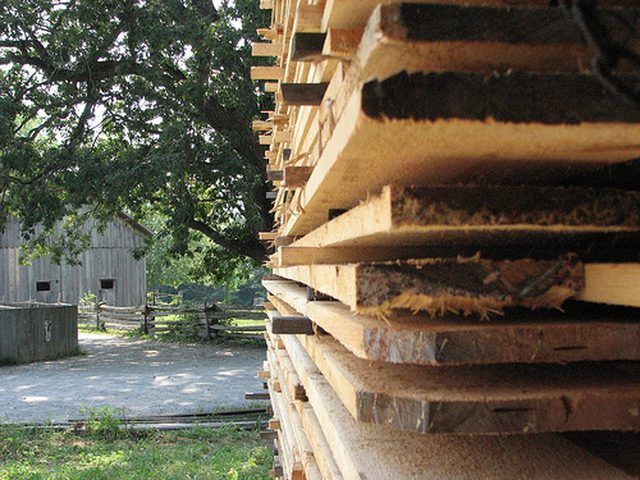Bulbs
Flower Basics
Flower Beds & Specialty Gardens
Flower Garden
Garden Furniture
Garden Gnomes
Garden Seeds
Garden Sheds
Garden Statues
Garden Tools & Supplies
Gardening Basics
Green & Organic
Groundcovers & Vines
Growing Annuals
Growing Basil
Growing Beans
Growing Berries
Growing Blueberries
Growing Cactus
Growing Corn
Growing Cotton
Growing Edibles
Growing Flowers
Growing Garlic
Growing Grapes
Growing Grass
Growing Herbs
Growing Jasmine
Growing Mint
Growing Mushrooms
Orchids
Growing Peanuts
Growing Perennials
Growing Plants
Growing Rosemary
Growing Roses
Growing Strawberries
Growing Sunflowers
Growing Thyme
Growing Tomatoes
Growing Tulips
Growing Vegetables
Herb Basics
Herb Garden
Indoor Growing
Landscaping Basics
Landscaping Patios
Landscaping Plants
Landscaping Shrubs
Landscaping Trees
Landscaping Walks & Pathways
Lawn Basics
Lawn Maintenance
Lawn Mowers
Lawn Ornaments
Lawn Planting
Lawn Tools
Outdoor Growing
Overall Landscape Planning
Pests, Weeds & Problems
Plant Basics
Rock Garden
Rose Garden
Shrubs
Soil
Specialty Gardens
Trees
Vegetable Garden
Yard Maintenance
Treated Vs. Untreated Lumber
Treated Vs. Untreated Lumber. Regardless of the size of your outdoor building project, if you are building with wood you will want to consider whether treated or untreated lumber will be the best option for you. Which of these is the better choice will depend on how the project will be used after completion, the environmental conditions the...

Regardless of the size of your outdoor building project, if you are building with wood you will want to consider whether treated or untreated lumber will be the best option for you. Which of these is the better choice will depend on how the project will be used after completion, the environmental conditions the building will endure after completion, and how the local area will be used.
Significance
Untreated lumber is the closest you will get to all natural wood, unless you fell your own tree. Treated lumber is infused with chemicals to resist deterioration due to weather, rot and boring insects. The primary differences between these two types of building materials lie in durability and health concerns. While either type of lumber can be used in a project requiring wood, you may consider natural wood if the structure will be in contact with children, animals, plants or ground water. Also, if the project may be in an environment prone to termites, excessive humidity, or the project needs to last a long time but people won't come into frequent contact with it, treated lumber may be the best option.
Considerations
There are many methods and chemical mixtures used to treat lumber, all with the same purpose and general effectiveness. Over the years, several chemical mixes have become less popular because of the relative health risks they present. However, it is important to note that every chemical mixture currently used to treat wood, regardless of the process, is hazardous. Treated wood can contain arsenic, creosote or Pentachlorophenol (PCP). These chemicals can be absorbed through direct, repeated or extended contact and result in adverse health effects in humans, plants and animals. In fact, the USDA has banned many of the chemicals used in the treatment of lumber for any use that might harm humans, livestock, soil fertility or groundwater potability.
History
Of course, humans have built with wood for thousands of years. But, it has been only since the late 1930s, when doctor Karl Wolman invented a procedure for infusing wood with a chemical preservative, that treated lumber has been a building material option. The process, called pressure treatment, requires that wood be loaded in a cylindrical holding tank while all of the air is removed through depressurization. Then, the preservative chemical is pumped into the tank under high pressure, forcing it deep into the wood.
Types
Today there are only four different levels of pressure treatment, differentiated by the intended use of the lumber and the pounds of preservative per cubic foot of wood. The groups will be labeled for above ground (0.25), ground contact (0.40), permanent wood foundation (0.60) and salt water usage (2.05). All treated lumber will be grouped and marked on this basis regardless of what type of chemical mixture is used to treat the wood.
Cost
Most pressure treated lumber will be more expensive than natural wood due to the cost of the additional processing. However, when you factor in the comparable durability of the product, the marginal cost difference of treated lumber versus untreated lumber becomes much more reasonable, particularly if the project is better suited to treated lumber as the building material.